ETIAS vs. EES: What’s The Difference?
20th October, 2022

By now, you’ve probably heard the terms ETIAS and EES. As you prepare for the 2026 European travel requirements, you’re aware that these systems are important, but you may be curious about the difference between the two. You may even wonder if they’re the same thing and if you somehow interpreted the term wrong.
ETIAS (European Travel Information and Authorisation System) and EES (Entry/Exit System) are two different systems. Although they work in conjunction with each other, the systems will operate differently.
What is ETIAS?
ETIAS will come into effect in the last quarter of 2026, although it was announced and introduced by the European Commission in 2016. The main function of the ETIAS visa waiver is to help strengthen European security, combat terrorism and prevent cross-border crime. It will do this by pre-screening travelers and denying access to those categorized as a security, criminal, terrorist, or health risk.
It will be mandatory starting in Q4 2026 for all applicants who do not currently need a visa to enter Europe but are intending to visit the Schengen Area to acquire an ETIAS. Before applicants can be approved, they must complete the application and pay the fee.
What is EES?
Entry / Exit System (EES) is also a new electronic registration system that will be put in place for current travelers holding Schengen visas. Passport holders from various countries that require a Schengen visa will be required to register in the EES once they arrive at the border aside from having an approved Schengen visa.
These travelers’ passports will no longer be manually stamped by an immigration officer upon entering and exiting any Schengen Area, but will instead have their passports read at machines in airports and seaports. Currently, the system is scheduled for introduction in October 2025.
ETIAS vs. EES: What's the difference?
The list of countries that require an ETIAS compared to those that are part of EES is different. ETIAS is a visa waiver for countries that currently do not need a visa to immediately enter the Schengen Area, while EES is for countries that do need an EU and/or Schengen Area visa upon entrance. ETIAS also requires an application and comes at a fee, while EES does not.
The Entry/Exit System is a monitoring system that records where and when the passport holder entered or left any EU or Schengen Area country. Another notable distinction is that, unlike ETIAS, which simply grants or disproves an applicant’s application, EES has the ability to quickly identify and locate visitors who have overstayed the 90-day time limit as allowed by the ETIAS and who could potentially serve as a threat.
ETIAS and EES: The similarities
Although ETIAS and EES have two different functions, they are not only created from the same mindset but also built to support each other. Both systems were designed and introduced to safeguard and increase security for Schengen citizens and tourists. Due to increased threats of terrorist attacks in recent years, ETIAS and EES are meant to boost border security and will be operated by EU-Lisa, the European Union’s agency that manages large-scale information systems.
EES will also work alongside ETIAS not as its own entity but in conjunction. EES will automatically be activated once an ETIAS-approved passport is presented to be examined. It will serve as an additional security measure for ETIAS and monitor movements.
SIGN UP FOR OUR NEWSLETTER
Be the first to receive exciting updates, exclusive offers, and valuable content directly to your inbox.
